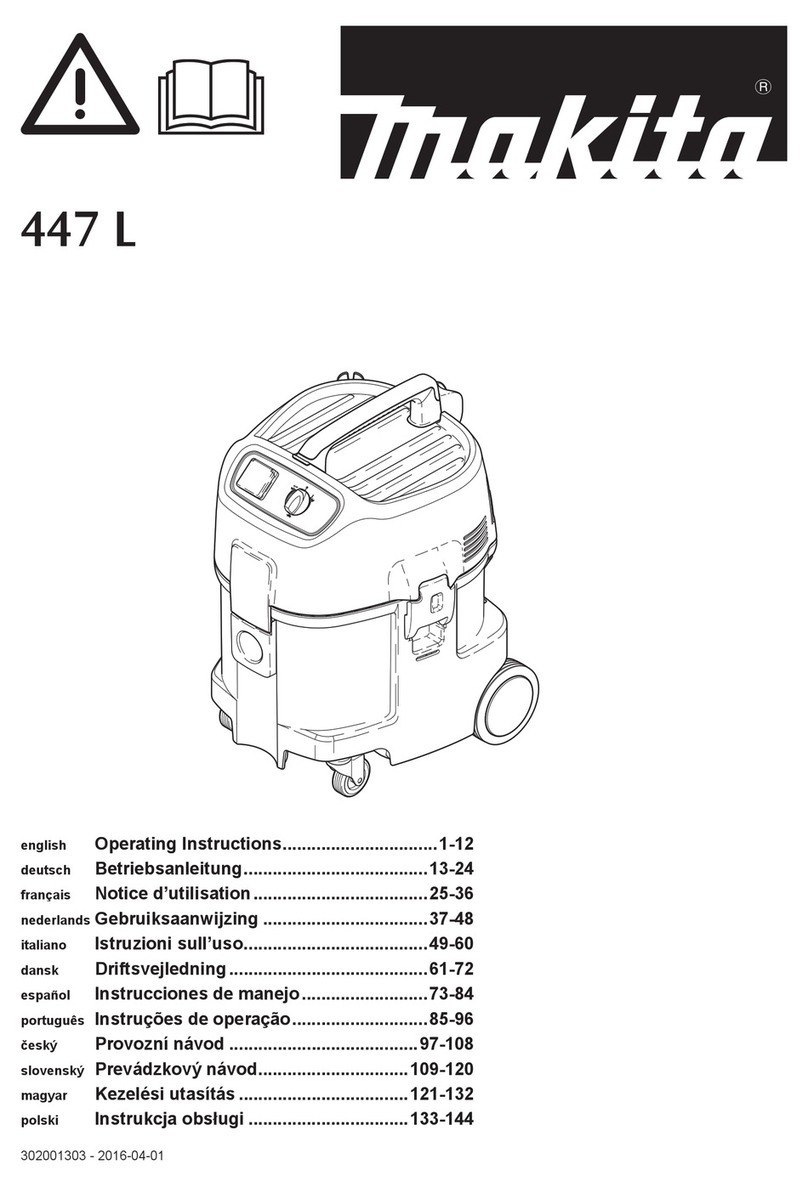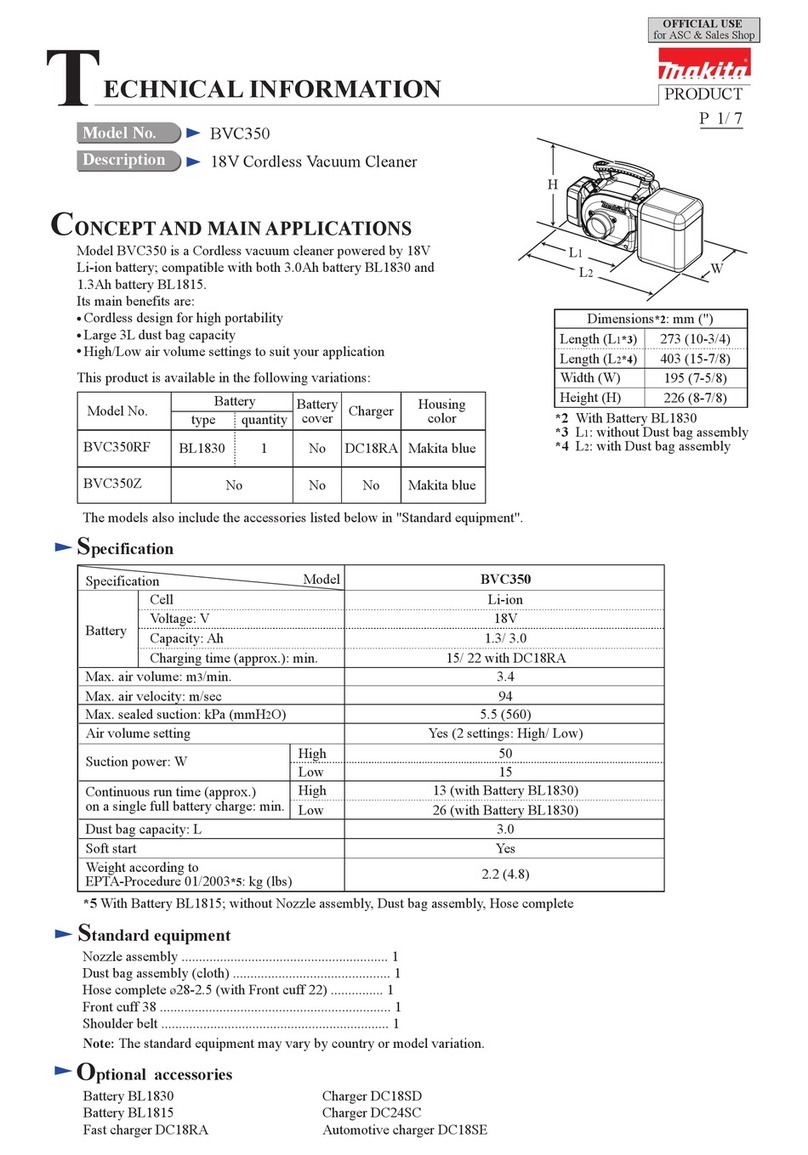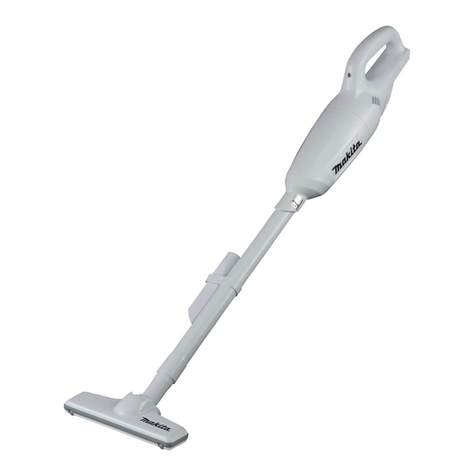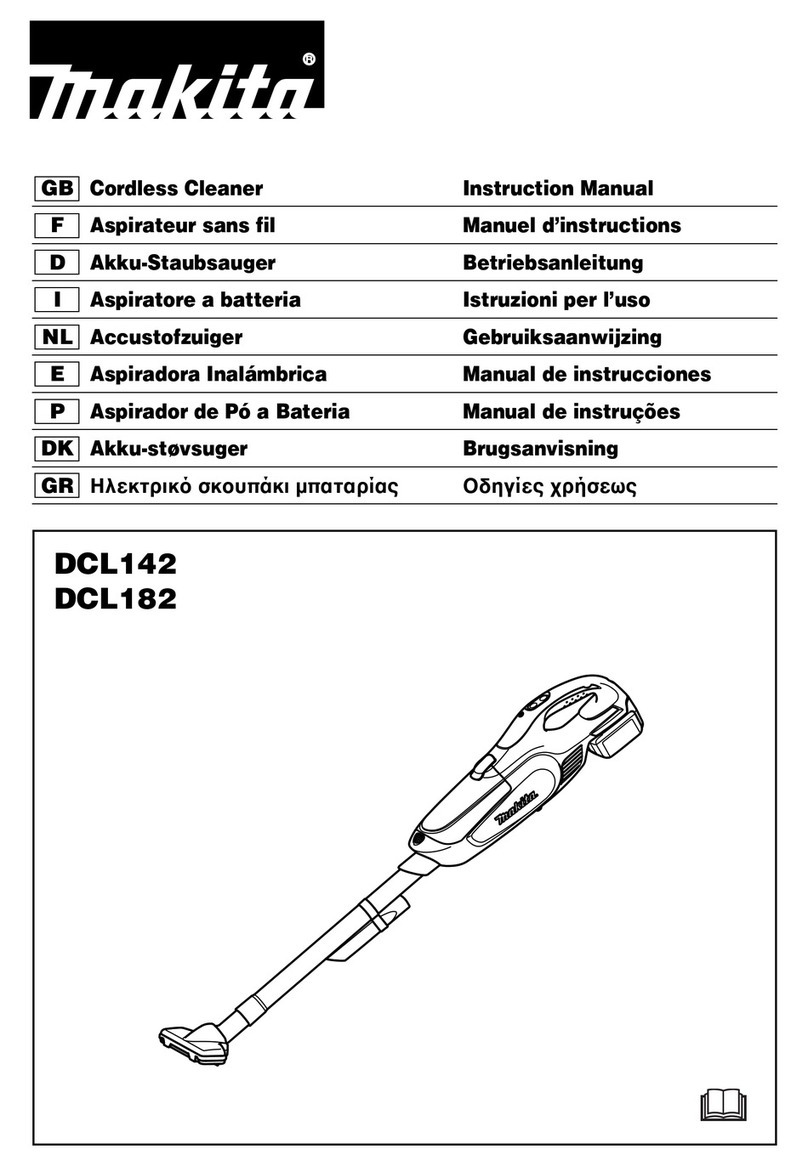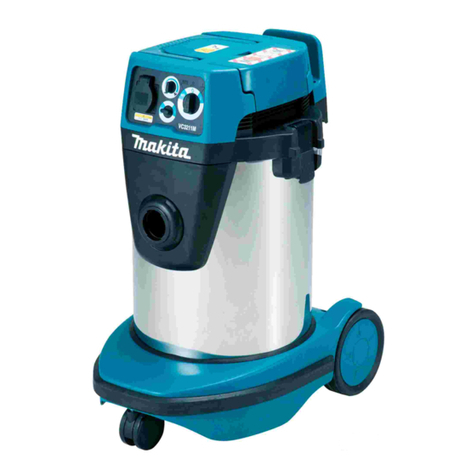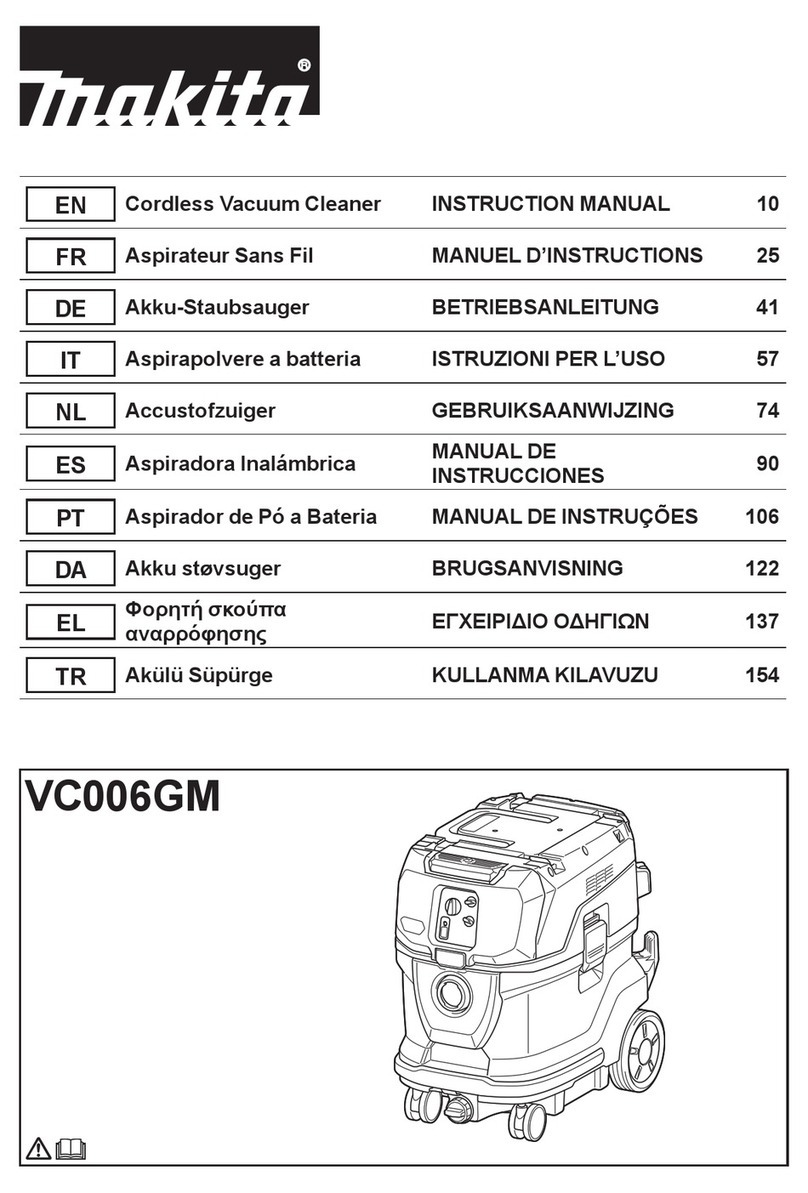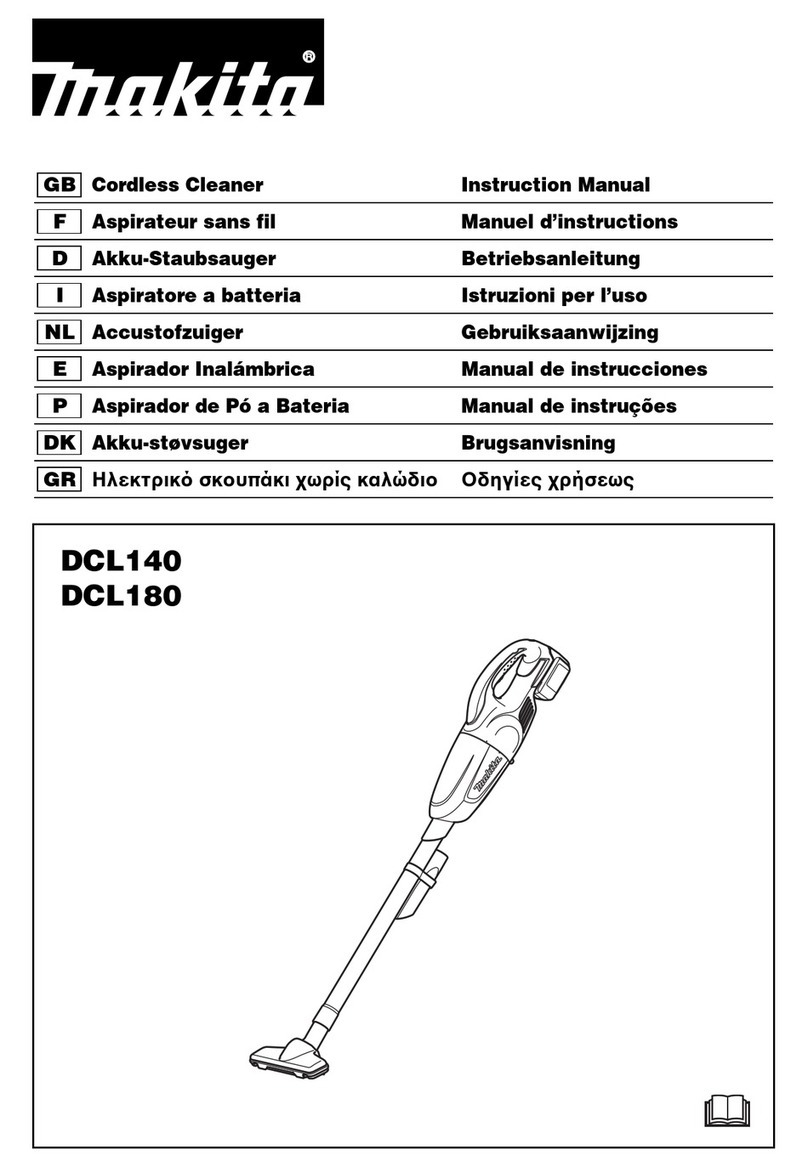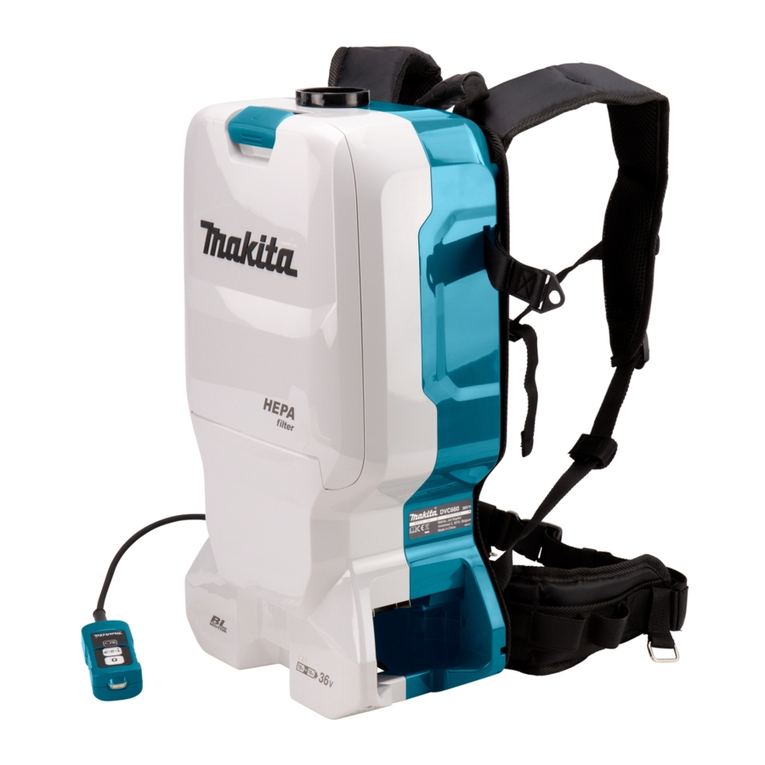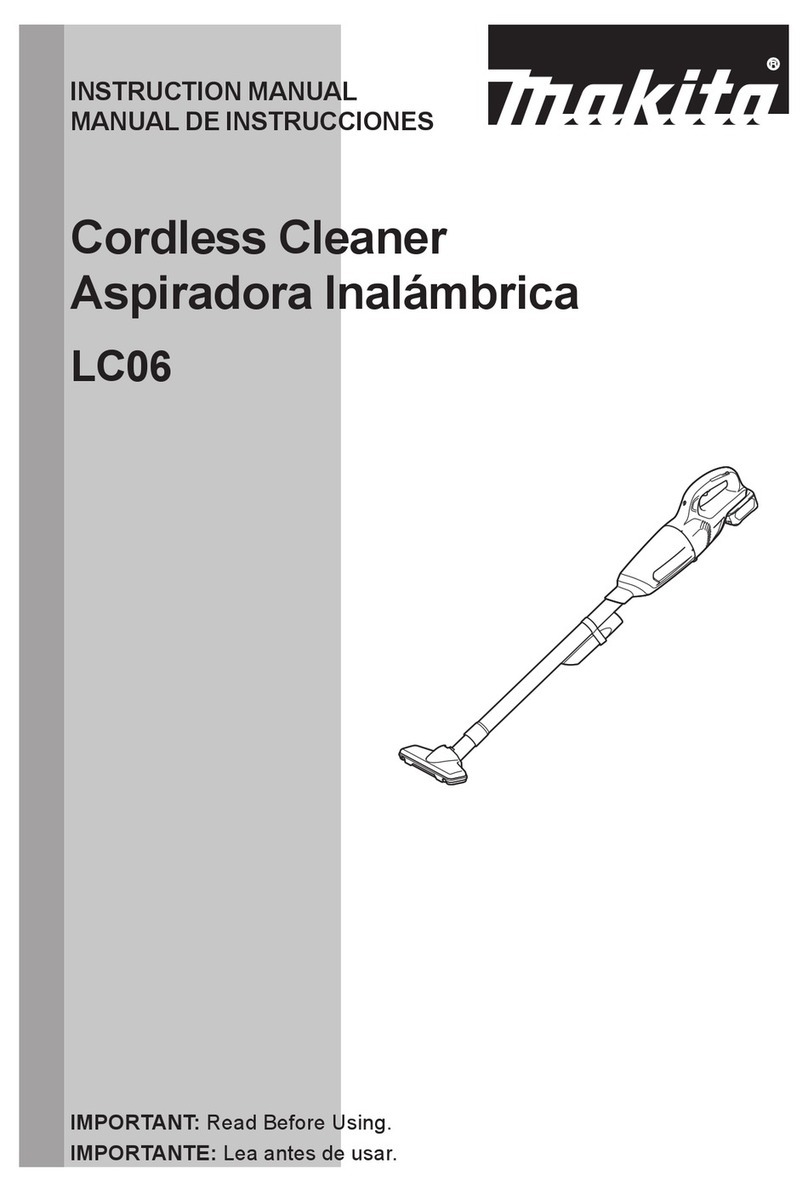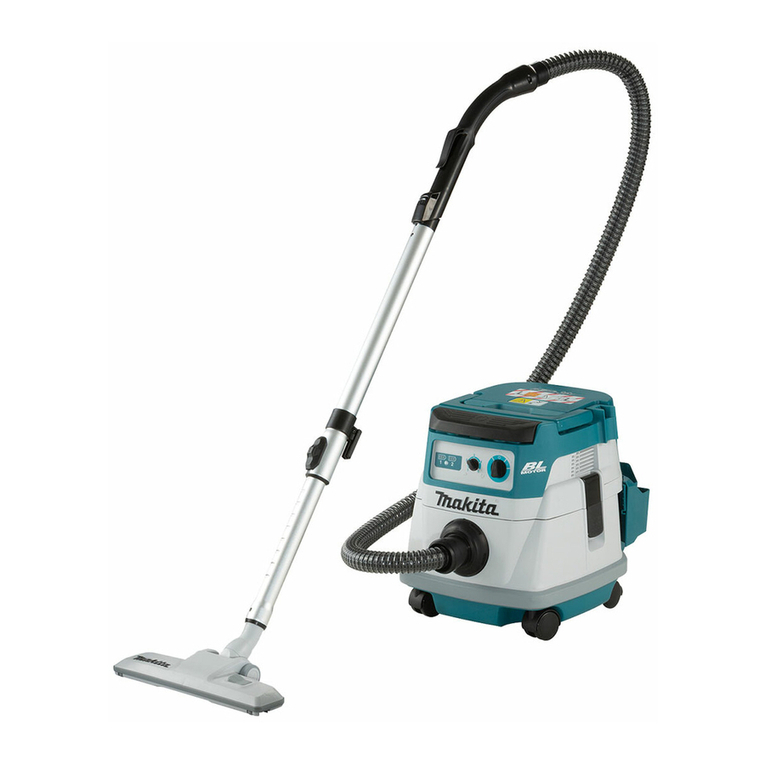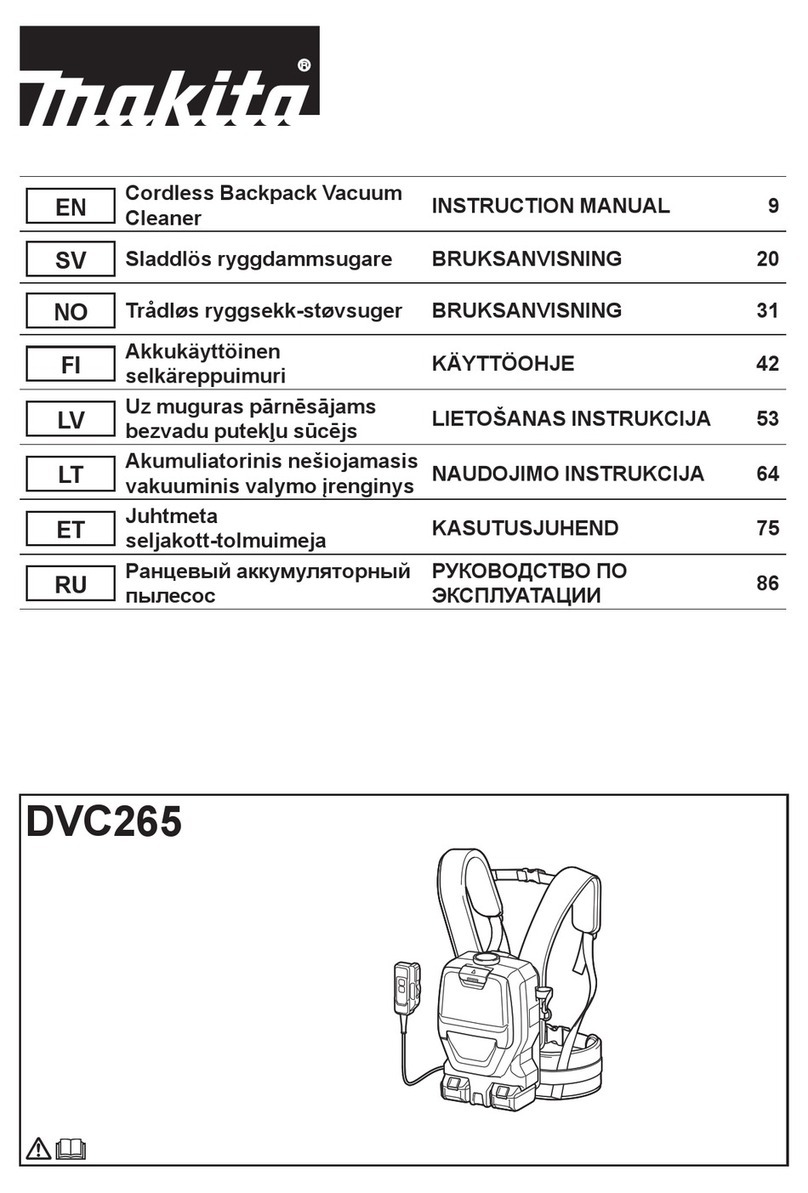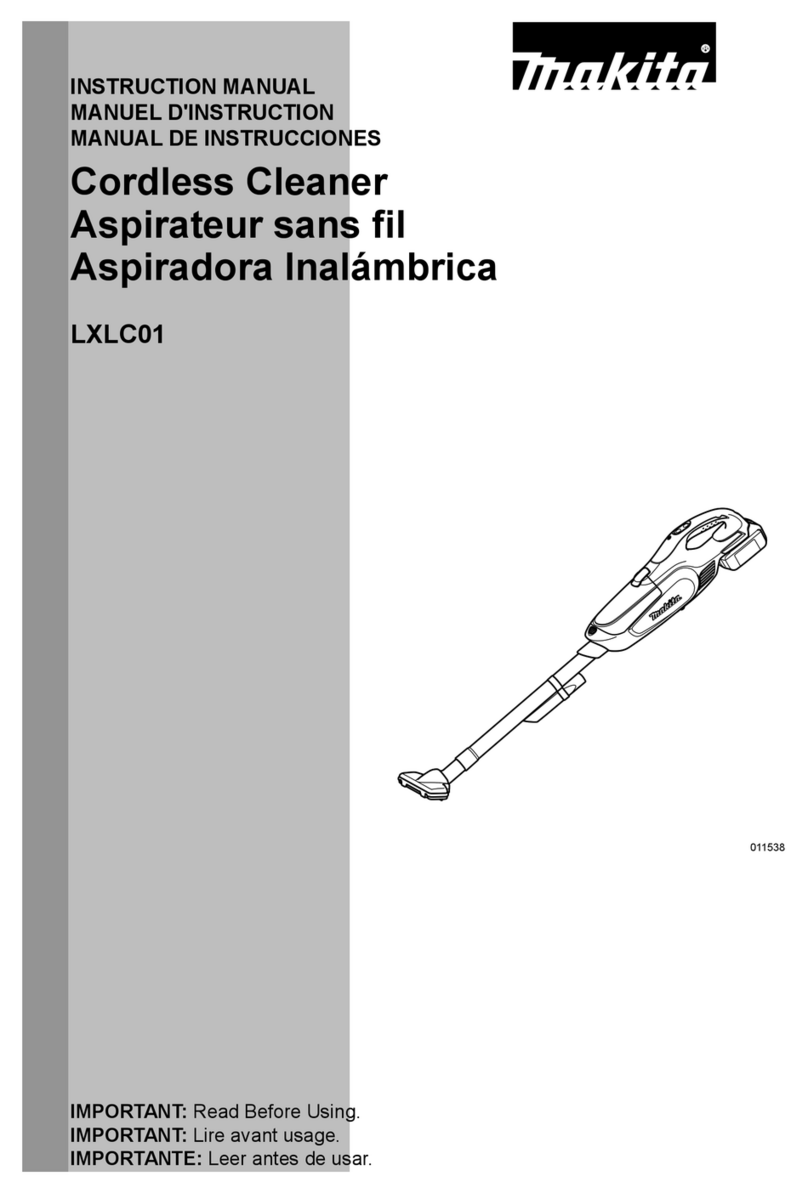
4ENGLISH
17. MAINTAIN THE CLEANER WITH CARE. Keep
the cleaner clean for better and safer per-
formance. Follow instructions for changing
accessories. Keep handles dry, clean, and free
from oil and grease.
18. CHECK DAMAGED PARTS. Before further use
of the cleaner, a guard or other part that is
damaged should be carefully checked to deter-
mine that it will operate properly and perform
its intended function. Check for alignment of
moving parts, binding of moving parts, break-
age of parts, mounting, and any other condi-
tions that may aect its operation. A guard or
other part that is damaged should be properly
repaired or replaced by an authorized service
center unless otherwise indicated elsewhere
in this instruction manual. Have defective
switches replaced by authorized service cen-
ter. Do not use the cleaner if switch does not
turn it on and o.
19. REPLACEMENT PARTS. When servicing, use
only identical replacement parts.
20. STORE IDLE CLEANER. When not in use, the
cleaner should be stored indoors.
21. Wet lters and the interior part of the liquid
container shall be dried before storage.
22.
Be kind to your cleaner. Rough handling can cause
breakage of even the most sturdily built cleaner.
23. Do not attempt to clean the exterior or interior
with benzine, thinner or cleaning chemicals.
Cracks and discoloration may be caused.
24. Do not use cleaner in an enclosed space where
ammable, explosive or toxic vapors are given
o by oil-based paint, paint-thinner, gasoline,
some mothproong substances, etc., or in
areas where ammable dust is present.
25. Do not operate the cleaner or any tool while
under the inuence of drugs or alcohol.
26. As a basic rule of safety, use safety goggles or
safety glasses with side shields.
27. Use a dust mask in dusty work conditions.
28. This machine is not intended for use by per-
sons including children with reduced physical,
sensory or mental capabilities, or lack of expe-
rience and knowledge.
29. Young children should be supervised to
ensure that they do not play with the cleaner.
30.
Never handle battery(ies) and cleaner with wet hands.
31. Use extreme caution when cleaning on stairs.
32. Do not use the cleaner as a stool or work
bench. The machine may fall down and may
result in personal injury.
33. Before use, operators shall be provided with
information, instruction and training for the
use of the machine and the substances for
which it is to be used, including the safe
method of removal and disposal of the mate-
rial collected.
34. The machine should be technically inspected
by the manufacturer, or an instructed person,
at least annually, consisting of, for example,
inspection of lters for damage, air tightness
of the machine and proper function of the
control mechanism.
35. When carrying out service or repair opera-
tions, all contaminated items which cannot be
satisfactorily cleaned are to be disposed of;
such items shall be disposed of in impervious
bags in accordance with any current regula-
tion for the disposal of such waste.
Battery tool use and care
1. Recharge only with the charger specied by
the manufacturer. A charger that is suitable for
one type of battery pack may create a risk of re
when used with another battery pack.
2. Use power tools only with specically desig-
nated battery packs. Use of any other battery
packs may create a risk of injury and re.
3. When battery pack is not in use, keep it away
from other metal objects, like paper clips,
coins, keys, nails, screws or other small metal
objects, that can make a connection from one
terminal to another. Shorting the battery termi-
nals together may cause burns or a re.
4. Under abusive conditions, liquid may be
ejected from the battery; avoid contact. If con-
tact accidentally occurs, ush with water. If
liquid contacts eyes, additionally seek medical
help. Liquid ejected from the battery may cause
irritation or burns.
5. Do not use a battery pack or tool that is dam-
aged or modied. Damaged or modied batteries
may exhibit unpredictable behaviour resulting in
re, explosion or risk of injury.
6. Do not expose a battery pack or tool to re or
excessive temperature. Exposure to re or tem-
perature above 130 °C may cause explosion.
7. Follow all charging instructions and do not
charge the battery pack or tool outside the
temperature range specied in the instruc-
tions. Charging improperly or at temperatures
outside the specied range may damage the
battery and increase the risk of re.
SAVE THESE INSTRUCTIONS.
WARNING: DO NOT let comfort or familiarity
with product (gained from repeated use) replace
strict adherence to safety rules for the subject
product. MISUSE or failure to follow the safety
rules stated in this instruction manual may cause
serious personal injury.
Important safety instructions for
battery cartridge
1. Before using battery cartridge, read all instruc-
tions and cautionary markings on (1) battery
charger, (2) battery, and (3) product using
battery.
2. Do not disassemble battery cartridge.
3. If operating time has become excessively
shorter, stop operating immediately. It may
result in a risk of overheating, possible burns
and even an explosion.
4. If electrolyte gets into your eyes, rinse them
out with clear water and seek medical atten-
tion right away. It may result in loss of your
eyesight.
